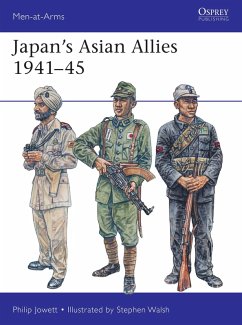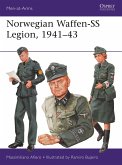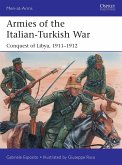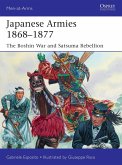During the Japanese occupation of large parts of Asia and the Pacific in 1941-45, Japan raised significant numbers of troops to fight alongside them, as well as militias to guard their conquests. The total number of these soldiers is estimated at no fewer than 600,000 men. These ranged from the regular troops of Manchukuo (200,000 men), Nanking China (250,000), Thailand, and recruits from the 'puppet' Burmese Independence Army (30,000) and Indian National Army (40,000), to constabularies and spear-wielding militias in the Philippines (15,000), Borneo, Indonesia and New Guinea.
Many of the recruits from former European colonies hoped for independence as part of the 'Greater East-Asian Co-Prosperity Sphere' proclaimed by Japanese propaganda, but Japan's intentions were entirely cynical. They formed alliances to deny the Allied powers access to territory that they could not actually occupy, and raised these large numbers of auxiliary troops to relieve the manpower burden of occupation, or simply as 'cannon-fodder'.
This extensively researched study examines each of these armies and militias in detail, exploring their history and deployment during World War II, and revealing the intricacies of their arms and equipment with stunning full-colour artwork and previously unpublished contemporary photographs.
Many of the recruits from former European colonies hoped for independence as part of the 'Greater East-Asian Co-Prosperity Sphere' proclaimed by Japanese propaganda, but Japan's intentions were entirely cynical. They formed alliances to deny the Allied powers access to territory that they could not actually occupy, and raised these large numbers of auxiliary troops to relieve the manpower burden of occupation, or simply as 'cannon-fodder'.
This extensively researched study examines each of these armies and militias in detail, exploring their history and deployment during World War II, and revealing the intricacies of their arms and equipment with stunning full-colour artwork and previously unpublished contemporary photographs.









